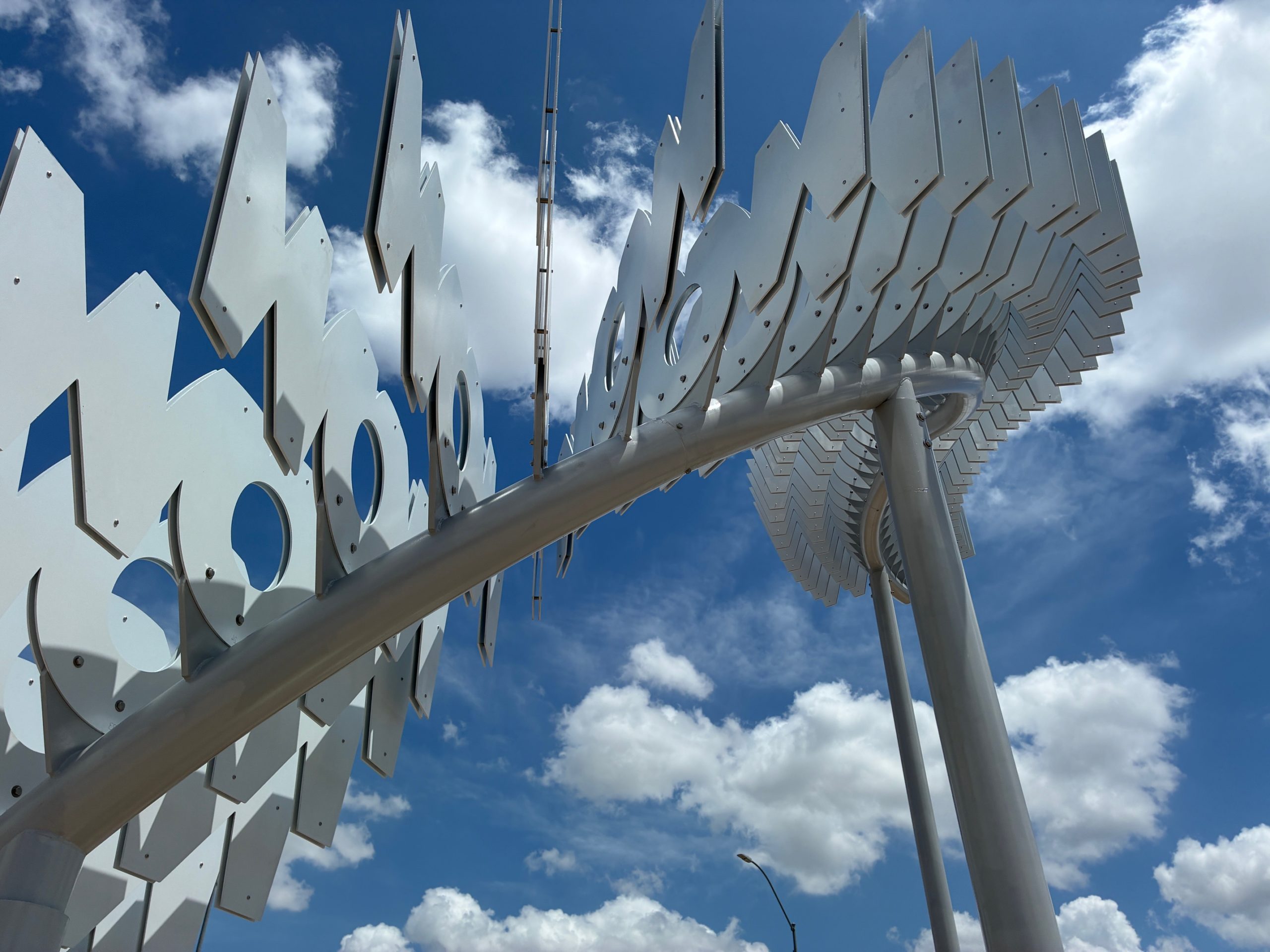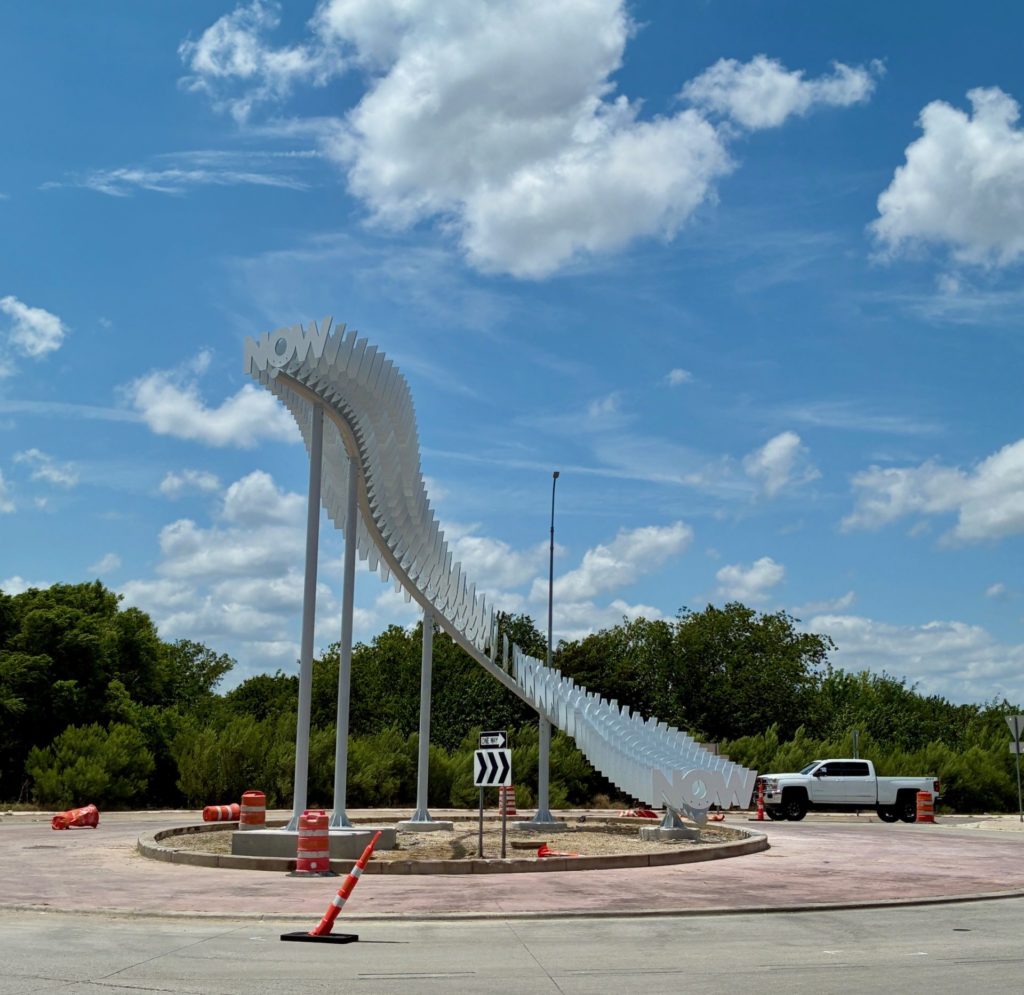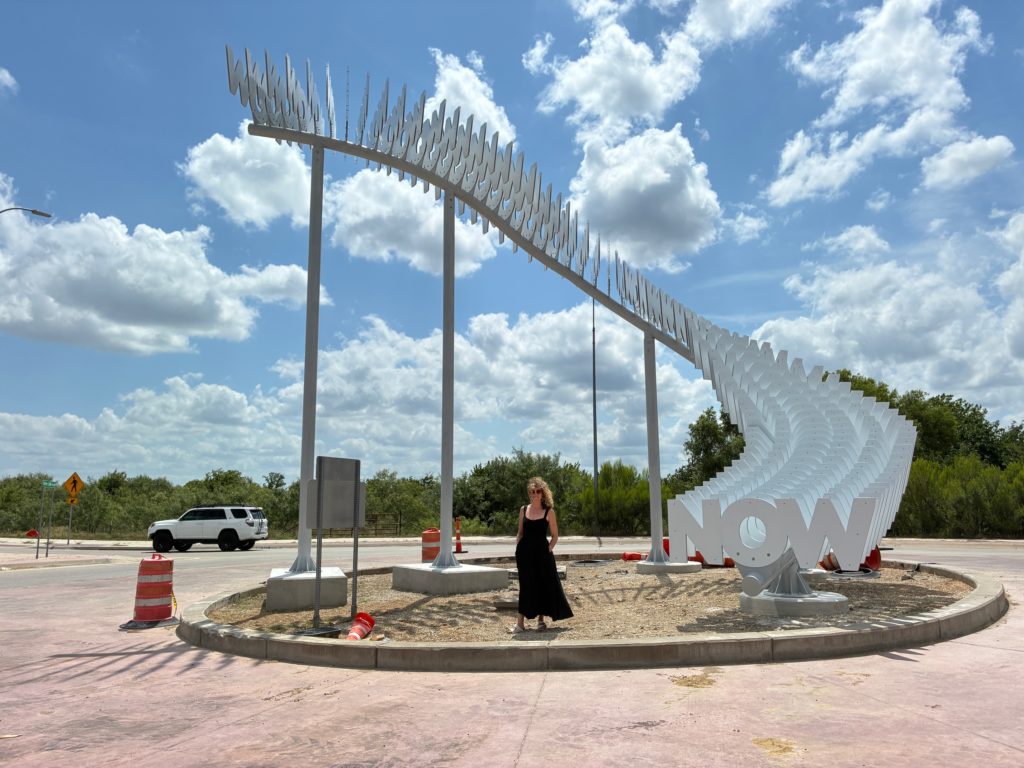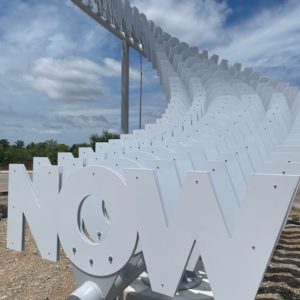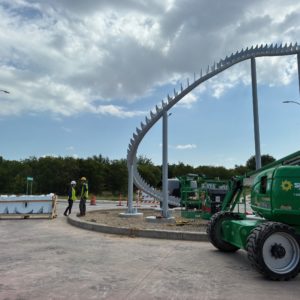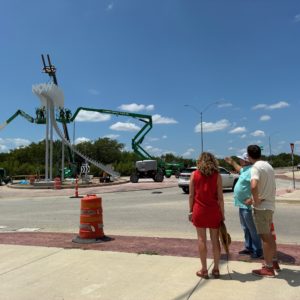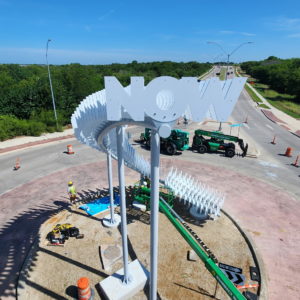A Very Long Now encourages both living in the present and thinking in longer terms. The sculpture includes a total of 60 NOWs, which alludes to those small increments of time counted by clocks—the number of seconds in a minute and the number of minutes in an hour. Each NOW, like a brief moment in time, is so thin that it is almost non-existent when viewed from the side. Yet they all work together to create an upward-spiraling form that is greater than the sum of its parts. That form is both linear and cyclical in nature, just like the different ways we perceive and experience Time.
Thinking about Time as a construct, Eggert states:
The word “now” can have very different meanings when it is used in different contexts. It can refer to this very second (which has already passed), the time it will take to give this presentation (which is halfway over), this year, or this century. But our capacity to create a better future seems like it might depend on our collective ability to conceive of “now” in much longer terms—one that is longer or wider than our narrow fields of vision can contain. How would our behaviors change if we imagined a “now” that extends 10,000 years into the past, or 10,000 years into the future?
Although the path of these NOWs comes to a finite end, Eggert’s sculpture suggests the potential of time to extend and spiral endlessly outward and upward [into a future that does not yet exist]. It reminds us that time is continuous, and each moment is an extension of the past and a bridge into the future — a future that will still be now.
A Very Long Now was designed by Denton-based artist Alicia Eggert in collaboration with architect H James Lucas. The monumental sculpture, which spans 36 feet in width, 25 feet in depth, and reaches nearly 29 feet in height, was fabricated and installed by 900 North Studios. Its structural design was engineered by AJ Kuhn and its placement designed in coordination with civil engineer Jim DeOtte. Local contractor Northstar Construction completed the foundation work and final hardscaping.
Alicia Eggert is an interdisciplinary conceptual artist whose work gives material form to language and time. Inspired by physics and philosophy, Eggert often co-opts the methods and materials associated with commercial signage to communicate messages that inspire wonder and encourage reflection on significant political and social issues of our time. Eggert’s sign sculptures have been installed on rooftops in Russia, on bridges in Amsterdam, and on uninhabited islands in Maine, beckoning people to ponder their place in the world and the role they play in it. Based in Denton, Eggert is a tenured Associate Professor of Studio Art at University of North Texas. Her work has been exhibited at institutions including the Smithsonian American Art Museum’s Renwick Gallery, CAFA Art Museum Beijing, Philadelphia Museum of Art, and Telfair Museums. Eggert has received a TED Fellowship, Long Now Foundation Fellowship, Hopper Prize, S&R Foundation Washington Award, Harpo Foundation Direct Artist Grant, Nasher Sculpture Center Artist Microgrant, and Maine Arts Commission Artist Fellowship. Her first solo museum exhibition opened at the Art Museum of Southeast Texas in April 2024.

